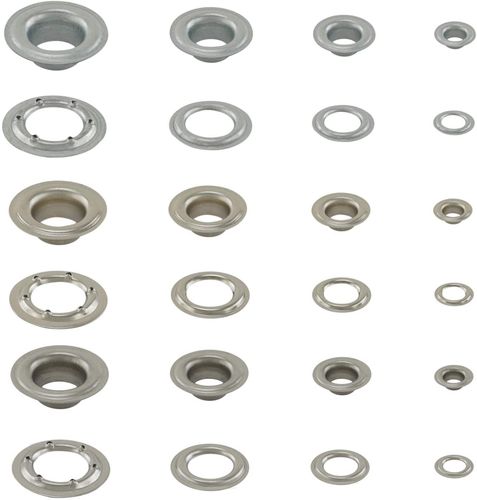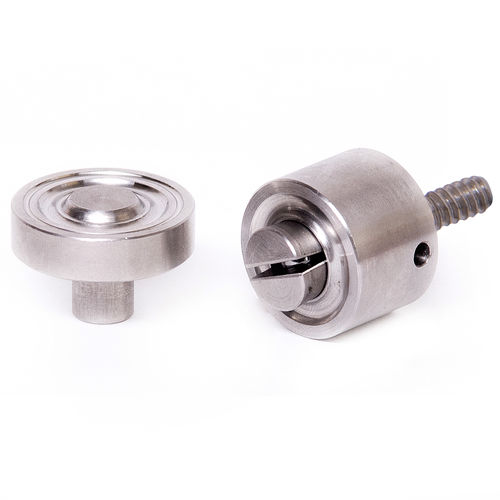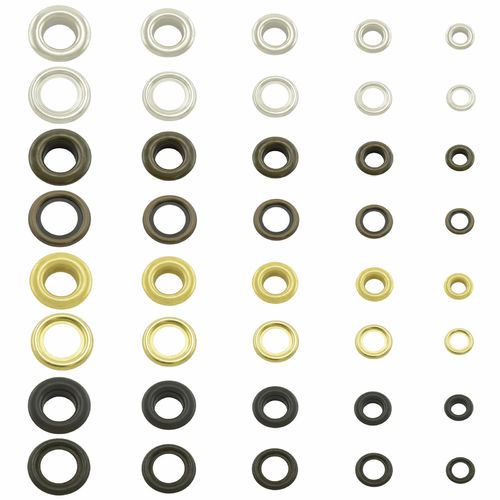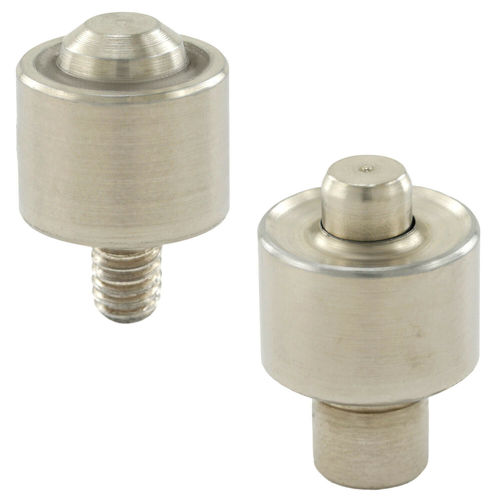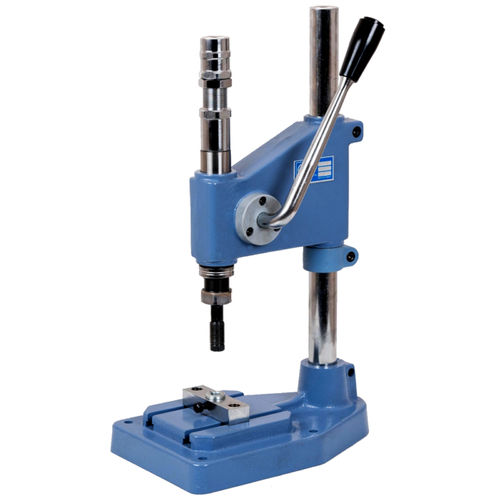Getmore Shop How to place eyelets - Instruction
How to place eyelets - Instruction
Grommets can be applied in a variety of ways: Hammer, grain iron, eye nippers and presses are often used. A brief overview, which explains the individual procedures, can be found in the following paragraph:
A) Pre-punching: Pre-punching of the material is advantageous before attaching most of the eyelets. This applies to small eyelets as well as eyelets, which are NOT standardized according to DIN 7332. This is best achieved with thin and elastic fabrics with a commercially available scissors or a pointed object. Here, the perforated area or slot in the fabric should at best be smaller than the eyelet inner diameter. If not, there is the possibility that the eye will release from the fabric during stretching or loading. Should the fabric become too elastic, it helps to stabilize the stretchable material by double or multi-layer or otherwise to lose its elasticity. The following applies: Trying is about studying! - because each material behaves completely differently by means of machinability, weaving, composition and possibly multi-layering.
Sturdy and sturdy fabrics, including art and leather, vinyl, plastic and tarpaulins, must be pre-punched with the inside diameter of the eyelet or slightly larger. In this case, at best, a hole iron or a whistle or a perforation tool from our range is suitable for use with eye presses.
B) Pressing: Depending on the type of tool and type used, the insertion of the eyelets is very different: Most of the inserts and press tools consist of two-piece receptacles. Frequently, one of these tool parts has a movable, cylindrical mandrel or bolt. The latter may fall closed, or consist of two so-called jaws, in the inner space of which a spring is inserted. These receptacles are provided with studs for inserting the eyelet part with neck, i. Of the larger eyelet part (also called rivet) and are used in a press either above (then the tool is threaded) or down (then with tool punch). The movable bolt prevents the eyelet from bending inwards during pressing. In this case, the larger eyelet part should be placed over the bolt with the flat edge / outer side, so that the flat outer side rests on the lower side of the tool and the eyelet / rivet is removed from the tool.
Should your eyelets fail secondarily, i. Next to the rivet there is also a flat counterpart / ring, this is placed on the unused tool part. This is, however, only if the previously described tool part for the rivet is inserted into the upper press receptacle (thread) and the counter disk is at the bottom. This applies almost exclusively to DIN eyelets as well as the corresponding DIN press tools. You can then place the material to be dissolved (depending on the material type pre-perforated or without perforation) on the lower tool with an opposing disc at the desired location and then actuate the lever so that both tool parts close and the eye is pressed.
For all other tools in which the o-rivet and the associated tool insert are mounted in the lower receptacle of the press, the cotter principle is used. On the lower tool part (with or without bolts), the eye part is looking upwards with eyelet / rivet, over the pre-perforated material is placed and finally the opposing disc is placed. As already mentioned - everything is layered on top of the lower tool part. Then press the lever to press the eyelet.
Advantages of eyeletting machines against other attachment methods:
-
Power transmission: The extended lever (or the spindle) increases the pressing force and relieves the hand compared to working with an eye-catcher. This also saves your muscles and is particularly beneficial for multiple eyelet attachment or impact work.
-
Time: A small amount of work can be carried out: Put the eyelet together with pre-perforated material, use the lever - FINISH!
-
Pressing result: The mechanical construction allows a targeted and even force transmission. This not only protects the eye but also the material. The result will be more even and clean compared to all other methods.
-
Versatile application: Due to the removable tool inserts, different materials can be processed with most eye squeezers. These include, in addition to different eye sizes, hollow rivets, push buttons, decorative rivets, and so on
-
Free hand: The press can be operated with only one hand when properly installed. The free hand can place the material in the correct position or fix it additionally.











